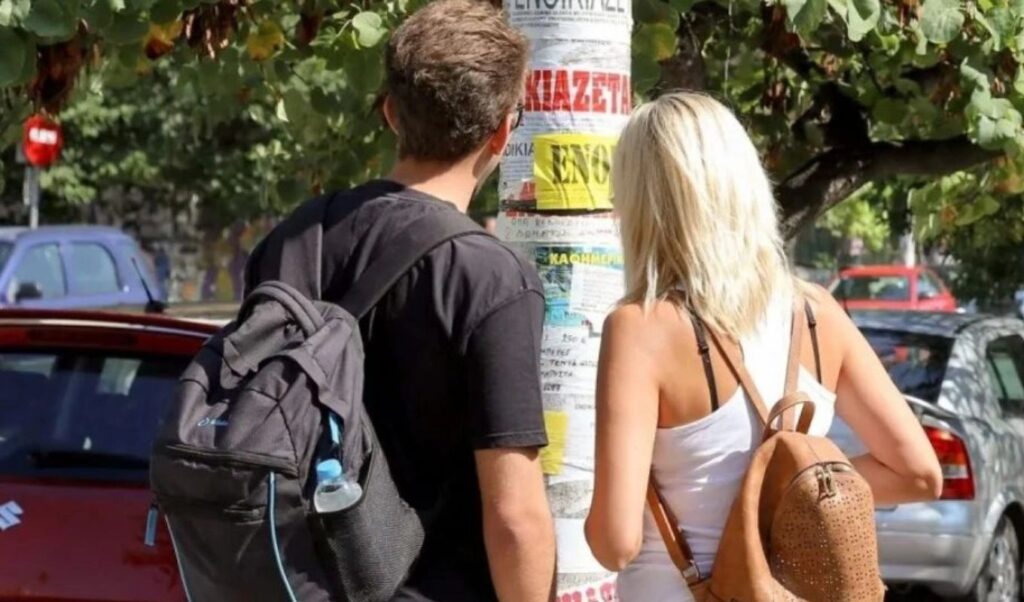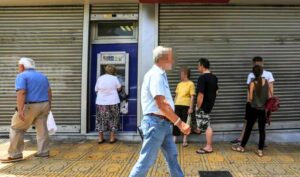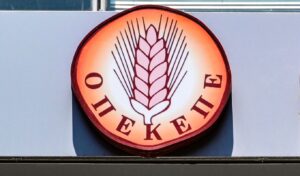The Greek housing market appears to be moving along three parallel axes in the summer of 2025: The rapid increase in student housing rents, the strengthening of vacation home values on tourist islands, and the steady influx of foreign capital for purchasing and operating summer residences. The latest measurements and analyses capture the basic trends of a market influenced by student demand, tourism, limited supply, and the transformation of housing into tools for financial returns.
Read: Student housing: Sky-high rents by region in Attica, Thessaloniki and provinces
Research by Spitogatos shows that student housing prices increased throughout the country. Geoaxis records increases in demand and prices for summer vacation homes for the eighth consecutive year, with emphasis on the Cyclades islands. Elxis presents the long-term economic footprint of selling vacation homes to foreign buyers, highlighting not only market value but also investment returns for the local and national economy. Premier Realty Greece highlights the changing characteristics of Greek buyers and the strengthening role of the market as investment. These 4 studies, when read together, offer a multi-layered portrait of the Greek real estate market: a market tested by demand but simultaneously transforming.
Spitogatos research on student housing (July 2025)
The period for finding student housing has begun following the announcement of university entrance exam scores. Spitogatos Insights recorded the evolution of average asking prices (AAP) for student housing rentals. The real estate market in Q2 2025 recorded a 7.2% increase in asking rents, while student housing AAP increased by 7.4%. In searching for student housing, the most important criteria are floor level, furnishing, and number of bedrooms, while energy class and air conditioning show growing interest.
In Attica, AAP increased by 5.4% compared to 2024. The lowest AAP is found in Nikaia (9 euros/sq.m.), where a home under 65 sq.m. costs approximately 500 euros. Conversely, in areas like Mets, Koukaki, and Kolonaki, AAP reaches 13 to 16.5 euros/sq.m. In Zografou, AAP for student housing under 65 sq.m. reaches 534 euros.
Thessaloniki recorded a 10.9% increase in AAP in Q2 2025. The lowest prices are found in Stavroupoli and Evosmos, while the highest are in the center and 40 Ekklisies – Evangelistria areas. In the rest of Greece, affordable AAP rates are found in Drama, Lamia, and Kastoria, while high prices appear in tourist cities like Chania, Corfu, and Rethymno. Large increases in AAP were recorded in Florina, Sparta, and Chania.
Geoaxis research on summer vacation homes – (Q2 2025)
Five popular islands show an increase in median asking prices for vacation home sales for the eighth consecutive year. There’s a significant price difference between luxury and typical homes. In Mykonos and Santorini, a luxury home costs up to 5.6 times more than a typical one. In Serifos, the corresponding ratio is 2.4 times. A significant question for the Cyclades is whether and when reckless development, overtourism, and infrastructure problems will bring changes to the ecosystem.
The largest summer homes are recorded in Mykonos, Paros, and Kea (approximately 240 sq.m.). In Santorini, the median surface area is 170 sq.m. and in Serifos 120 sq.m. The median age of properties in Mykonos, Paros, and Kea is 7 years, while in other islands it’s over 15. Price increases compared to last year: Mykonos +5.71% (16,000 euros/sq.m.), Santorini +5.49% (13,292 euros), Paros +4.53% (9,499 euros), Kea +6.31% (6,216 euros), Serifos +5.78% (3,827 euros). In Mykonos, the maximum price reaches 25,000 euros/sq.m. and in Santorini 20,000 euros/sq.m. In Paros, although the maximum price is 20,000 euros, the median is 9,466 euros, indicating large variation. More “grounded” is the picture in the less cosmopolitan Cyclades. In Serifos, the maximum price reaches 5,267 euros and in Kea 16,000 euros/sq.m., with significant differences between median and maximum prices. Mykonos has the largest price increase in a decade at +32%, while Serifos has the smallest (+19%). Although the tourist season started sluggishly (earthquakes, geopolitical issues), values haven’t been affected yet due to high purchasing power. Continued upward trend is expected, at a milder pace, unless a serious negative event occurs.
Economic footprint from vacation home purchases – Elxis analysis (July 2025)
According to Elxis – At Home in Greece, selling a newly built vacation home to a foreign buyer can generate 1,090,000 euros in benefits for the Greek economy over a decade. This includes both the initial purchase price and buying expenses (440,040 euros), as well as consumer spending and maintenance costs (651,500 euros). The model is based on a 120 sq.m. vacation house with pool and 500 sq.m. garden. The initial purchase cost is 400,000 euros. Transfer tax reaches 12,360 euros, while land registry fees and notary expenses add another 8,800 euros. Legal fees are 4,000 euros and brokerage commission (3%) reaches 14,880 euros. Thus, the total amount from the purchase reaches 440,040 euros.
According to Elxis CEO George Gavriilidis, many foreigners also choose to operate the property commercially. Usage is calculated at approximately seven months, with twelve weeks of rental per year. Visitor accommodation expenses reach 29,400 euros, while 21,250 euros are the owner’s annual expenses (consumption, entertainment), 10,000 euros for technical maintenance, and 4,500 euros for property management. Thus, annual inflows to the local economy exceed 65,000 euros or 650,000 euros in a decade.
The footprint is significant whether it’s Crete, Rhodes, Peloponnese, or less touristic places. Many specialties are involved: builders, contractors, technicians, restaurateurs, retail trade, fuel, cleaners, tour guides, brokers, notaries, engineers.
Luxury housing market
In recent years, the Greek luxury housing buyer has changed. From emotional, they become more strategic, choosing properties with added value and investment logic. As Korina Saia (Premier Realty Greece) notes, luxury housing is no longer just a status symbol but also a lifestyle choice. The interested party evaluates the property from location and energy performance to potential returns. In northern suburbs, Kifisia, Politeia, and Ekali maintain their premium value. In the south, Voula, Vouliagmeni, and Elliniko are in the spotlight due to redevelopments. In the Cyclades, properties combine owner-occupation with high returns.
Most deals range from 800,000 euros to 2,000,000 euros, with many homes exceeding 2.5 million. Returns reach 4%-6%, depending on location and use. Increasing domestic demand has been recorded in recent years. Greeks invest with knowledge and duration, seeking security in an uncertain geopolitical and economic environment. Luxury housing functions flexibly: primary or vacation home, tourist accommodation, or future support for children. In 2025, the luxury housing market is mature. Greeks aren’t simply buying property but investing in their future.
In conclusion, the housing market picture in summer 2025 is multi-layered and dynamic. The increase in student rents reflects pressure on cities and difficulty finding affordable housing. Rising vacation home prices on islands reinforces the investment character. The presence of foreign buyers adds inflows but also challenges for sustainability. Housing, from a social good, becomes an investment product, and balancing these trends will determine developments in coming years.




